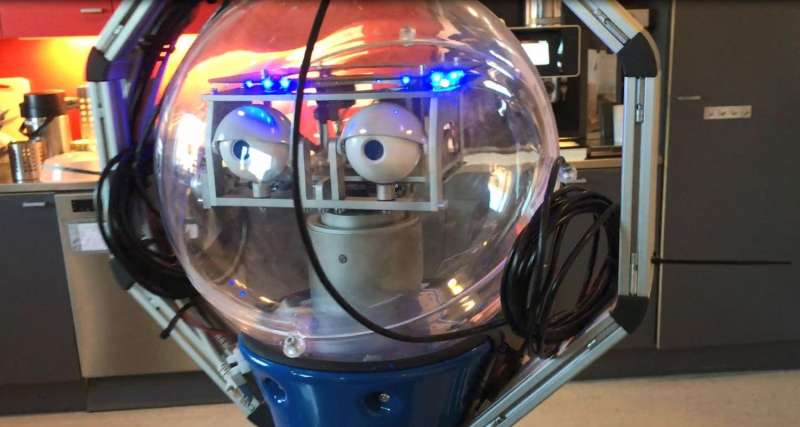Robot 'learns' how to function in human environments

Think your office is too cluttered for a robot to deal with? New research from KTH Royal Institute of Technology in Stockholm shows how robots can autonomously 'learn' their way around a dynamic human environment.
A striking blue robot named Rosie has made itself at home for the last couple of years in the Robotics, Perception and Learning lab at KTH, as part of a project called STRANDS, in which robots are learning how to perceive three dimensional environments and move about and interact in them—even in the course of routine afternoons where rooms are randomly closed off, students and researchers bustle around, and things like cups, soda cans and lab gear accumulate and, just as unpredictably, get cleared away.
Unlike humans robots actually have to learn things like: chairs change positions from hour to hour, or a dog in the photo taped over a PhD student's computer monitor is not physically in the room.
So Rosie—a Scitos G5 built by MetraLabs—maps the rooms at RPL, revisiting them repeatedly. She documents everything with the help of a depth camera (RGB-D), and dumps billions of points of physical space into a database, from which 3-D models of the rooms can be generated.
The system the KTH researchers use detects objects to learn by modeling the static part of the environment and extracting dynamic elements. It then creates and executes a view plan around a dynamic element to gather additional views for learning.
This autonomous learning process enables Rosie distinguish dynamic elements from static ones and to perceive depth and distance. She learns when things are where they are, and how to negotiate physical spaces.
Beyond that, Rosie also is building an understanding of what kind of spaces she is in—be they office spaces, kitchens or corridors.
More information: Thomas Faulhammer, Rares, Ambrus, Chris Burbridge, Michael Zillich,John Folkesson, Nick Hawes, Patric Jensfelt, Markus Vincze, Autonomous Learning of Object Models on a Mobile Robot, IEEE Robotics and Automation Letters (print publication, Volume: 2, Issue: 1, Jan. 2017) ieeexplore.ieee.org/document/7393491/
Provided by KTH Royal Institute of Technology





















